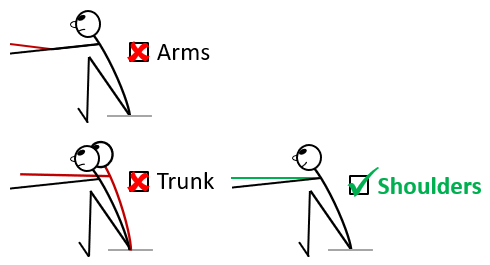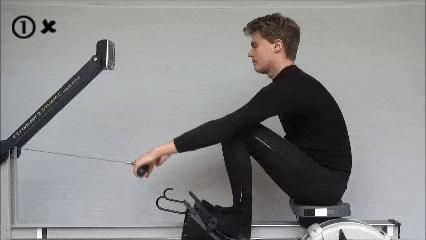|
|
The catch |
The point where the blade enters the water is called the catch. From the resting point, the water is approached slowly and the catch starts from a maximum of half a blade width between blade and water.
At the furthest point, the extended arms are moved gently upwards from the shoulder, and not with the arms (grabbing) or trunk. This is called the placing of the blade. The arms are preferably stretched and relaxed. The blade largely disappears under water, no force is required. Letting go of the handle(s) gives enough speed to make the catch.

Then the blade needs to be locked in the water. Just before the catch, the blade stands still and the water has speed. The blade only has pressure (resistance) when there is a difference in speed between the blade and the water, and when the blade is just slightly faster than the water. With the so-called lock of the blade, this difference in speed is negated by a short, fierce leg drive. Because the blade does not yet propel, this leg drive is resistanceless.
So the complete catch consists of three steps:
- the blade approaching the water,
- the blade is placed in the water and
- the blade is locked in the water, so that it can propel.
The catch takes place on the brief moment the seat does not move.

Catch with straight arms (3), not by bending the arms (1) or trunk (2)
 |
Recovery |
 |
Draw |
This article was translated automatically and is provided to you for free. You are most welcome to improve it!











